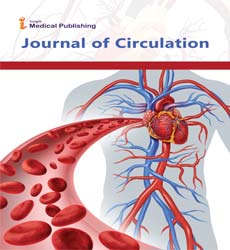Abstract
Efficacy of High versus Low Frequency Microcurrent Electrical Stimulation on Resistivity Index and Blood Flow Volume in Normal Subjects
Background: Blood flow is a vital and an essential factor in human life that can affect the whole body organs and systems. Many electrical currents have been shown to produce long term effects on vascularization at the capillary level. Micocurrent is one of these currents. Therefore, this study was conducted to investigate the effects of different frequencies of microcurrent electrical stimulation (MES) on resistivity index (RI) and blood flow in normal subjects. Methods: Thirty normal subjects, with the mean age of 28.77 (SD= ± 3.501) years and the mean body mass index of 23.20 (SD= ± 1.332) kg/m2 were assigned randomly to two equal groups: group (A) to receive high frequency MES (125 Hz, 30 min) or group (B) to receive low MES (40 Hz, 30 min). All subjects were assessed for RI, total blood flow volume, mean blood flow velocity and peak systolic velocity using Ultrasonic Doppler before and immediately after microcurrent application.Results: Intragroup comparison showed significant differences in both groups before and immediacy after microcurrent application regarding RI, total blood flow volume, mean blood flow velocity and peak systolic velocity in posterior tibial artery (P<0.05). In comparison to group (B), group (A) showed significant reduction in RI while total blood flow volume, mean blood flow velocity and peak systolic velocity showed no significant difference as the mean difference for all variables were (0.075, 0.088, 0.904, 8.011), respectively.Conclusion: In normal subjects, both high frequency and low frequency MES are beneficial in improving blood flow.In addition, high frequency MES decreases RI more than low frequency MES.
Author(s): Battecha Kadrya
Abstract | Full-Text | PDF
Share This Article
Open Access Journals
- Aquaculture & Veterinary Science
- Chemistry & Chemical Sciences
- Clinical Sciences
- Engineering
- General Science
- Genetics & Molecular Biology
- Health Care & Nursing
- Immunology & Microbiology
- Materials Science
- Mathematics & Physics
- Medical Sciences
- Neurology & Psychiatry
- Oncology & Cancer Science
- Pharmaceutical Sciences
